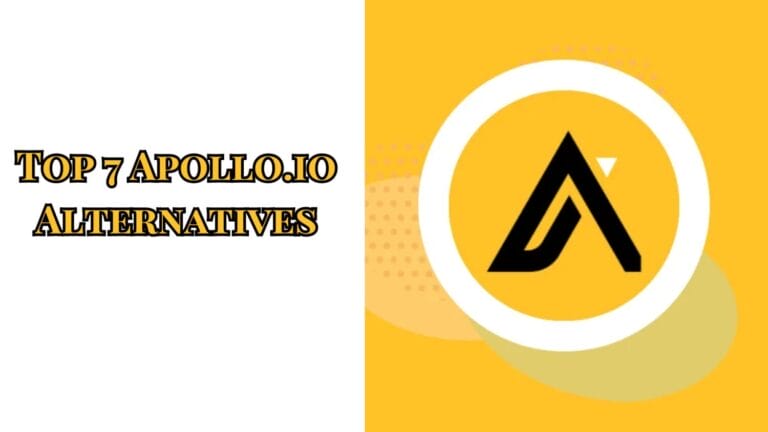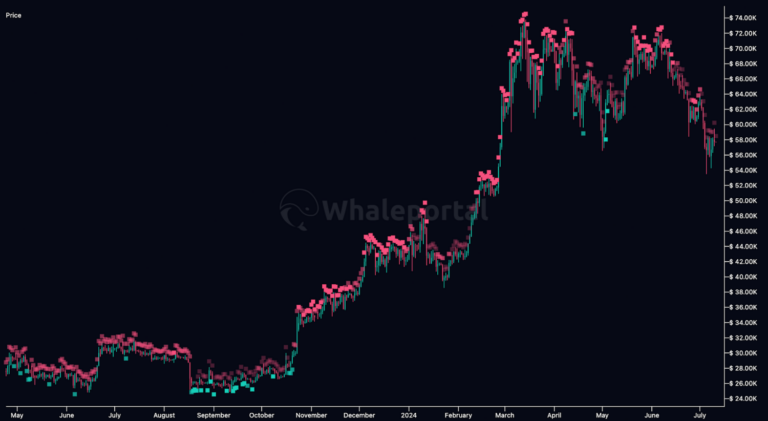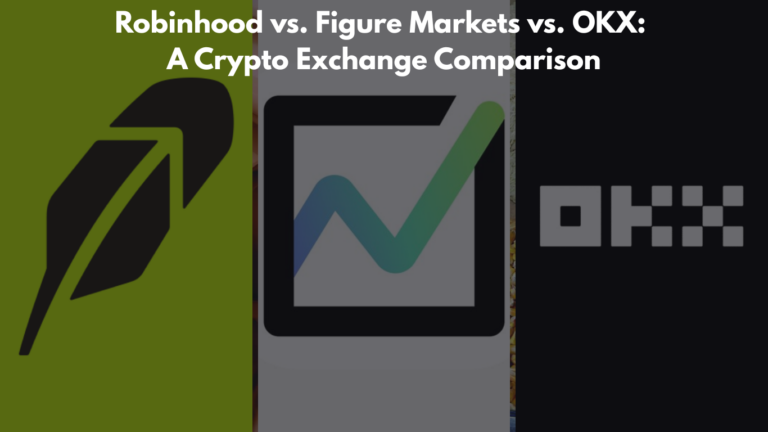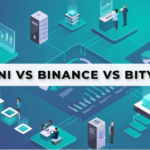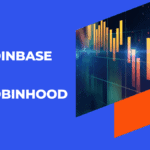As we happily move on to another year, leaving COVID-19 behind, there’s little doubt that the Home Office has become an integral part of our daily lives for many of us.
What began as a rather specialized option that the naive assumed would last for a couple of months has evolved into a full-fledged lifeline that has allowed many businesses to stay afloat during this arduous pandemic.
As we approach the end of another year, we’ve decided to dig deeper into one of Home Office’s major challenges since becoming online: remote team collaborations. This article will introduce you to 50 tools for remote team engagement.
Table of Contents
Engagement Tools for Audio/Video Conferencing
1. Skype

Skype is self-explanatory. With audio and video conversations, text messages, and screen sharing between various devices, this tool allows you to keep in touch with individuals all over the world for free. Furthermore, even if a person does not have a Skype account, it allows them to call mobiles and landlines all over the world.
Further, audio and video conferencing for up to 25 individuals are available. Apart from its high-quality video service, Skype has increased its chat functionality, giving it a significant competitive advantage.
2. Zoom
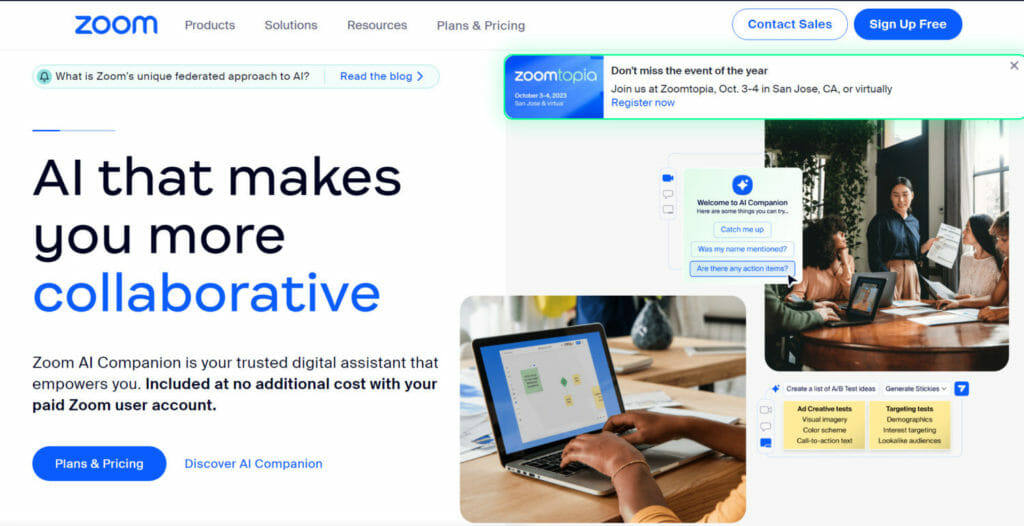
Zoom addresses the needs of businesses of all sizes. Zoom has you covered whether you want to interact with a large group of coworkers through video conference or host a webinar with 10,000 participants. File collaboration, group messaging, and whiteboarding help you work collaboratively and efficiently with your team.
By the way, there are video editing programs that may help you take segments of your video conversations and transform them into a cohesive, practical, and educational film to share later. You may even utilize the same tools to create stunning videos that encapsulate company culture or represent the ideals of your organization.
3. WebEx
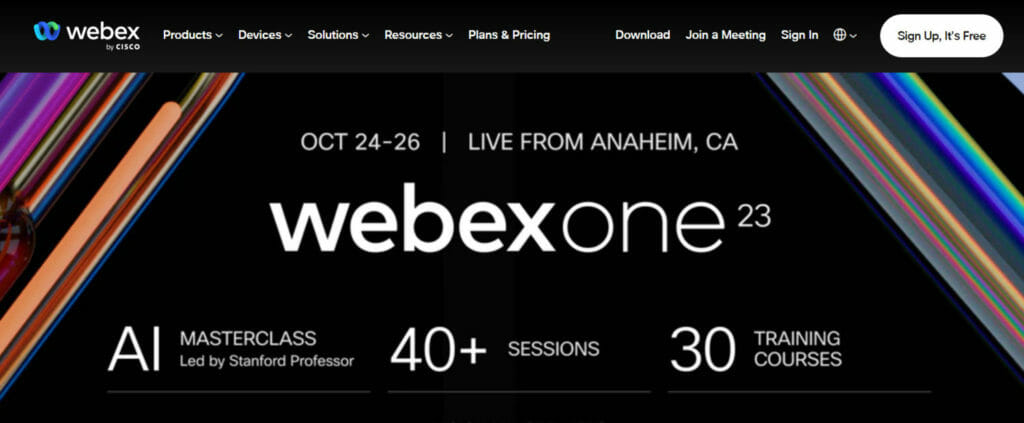
Cisco WebEx is a collection of products (WebEx Meetings and Cisco Spark). Each of these programs has its unique set of capabilities, but they are all about video calls. Admins or “hosts” set the restrictions in WebEx, such as whether a meeting can be restricted at any time, whether keyboard and mouse control is passed, and whether attendees can download, print, or comment on a shared file. They can also make whiteboards and polls and save the findings for later use.
4. GoToMeeting
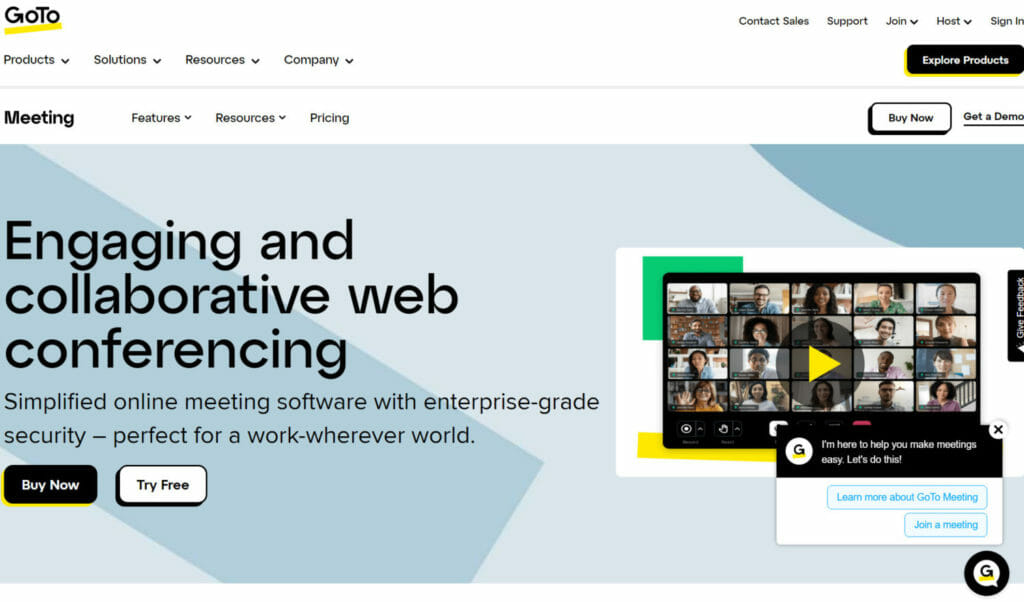
With GTM, your remote team does not need to travel anywhere to hold a meeting that seems real. HD video is ideal for doing webinars and holding conferences. Annotations can be made using drawing tools while sharing your desktop or mobile screen. Any conference can be accessed by just clicking the GTM link. If you don’t want to forget about a meeting, you can book it in advance in the application’s calendar.
5. Chanty
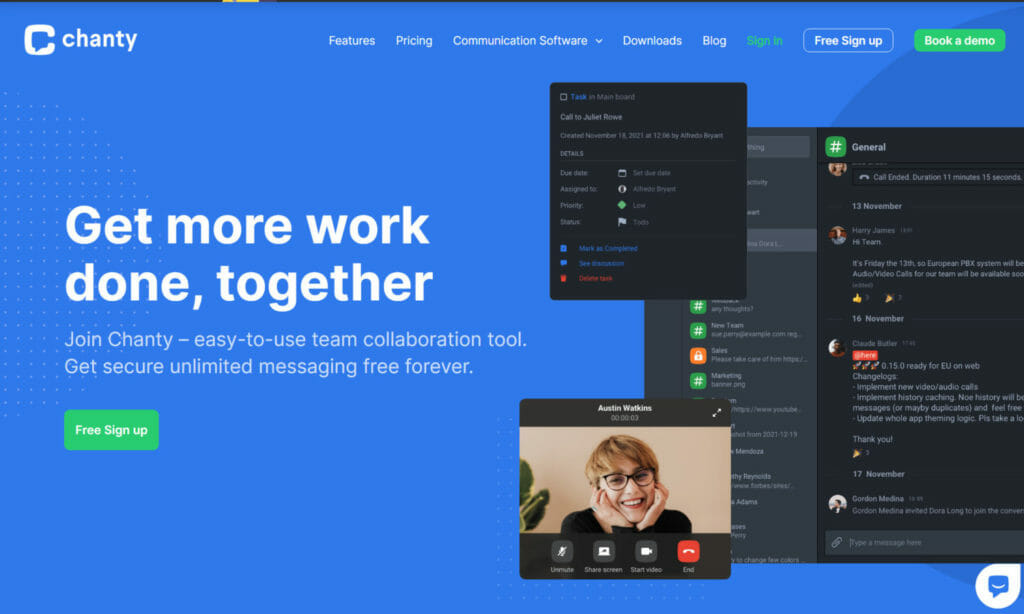
Chanty is a one-stop shop for team collaboration. It allows you to communicate with your entire team or individual team members through high-quality audio and video calls. You can also share voice messages to respond quickly while on the go.
There will be no more restricted searchable history and no more data loss. With its infinite message history, Chanty is a godsend for catching up on earlier messages.
You can use the built-in task manager to create new tasks from scratch or convert any communication into a task, assign a due date and priority, and designate a team member.
Integrations that are really effective Save time at work by centralizing notifications from third-party apps used by your team.
7. Google Hangouts
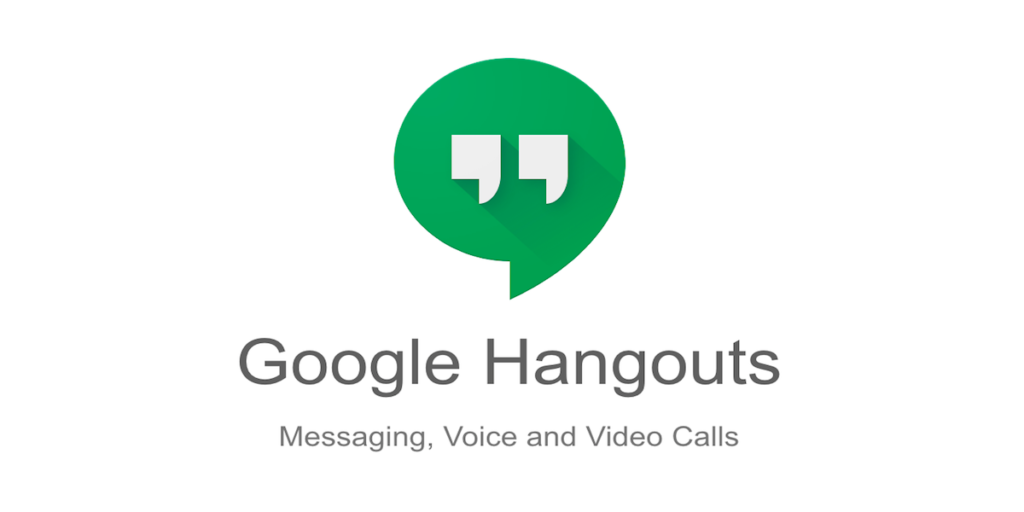
Google Hangouts allows you to make phone conversations, send text messages, share your screen, and share images. Start a meeting, use YouTube to stream video calls live, hold a conference, or participate in from a computer, phone, or conference room. Viewers do not need to download anything or enter any passwords to use this tool; they simply need to click on the given link and join the meeting. You can also make phone calls from your computer.
Also, you may read:
Top 15 Team Management Software in 2023
Engagement Tools for Project Management
1. Jira
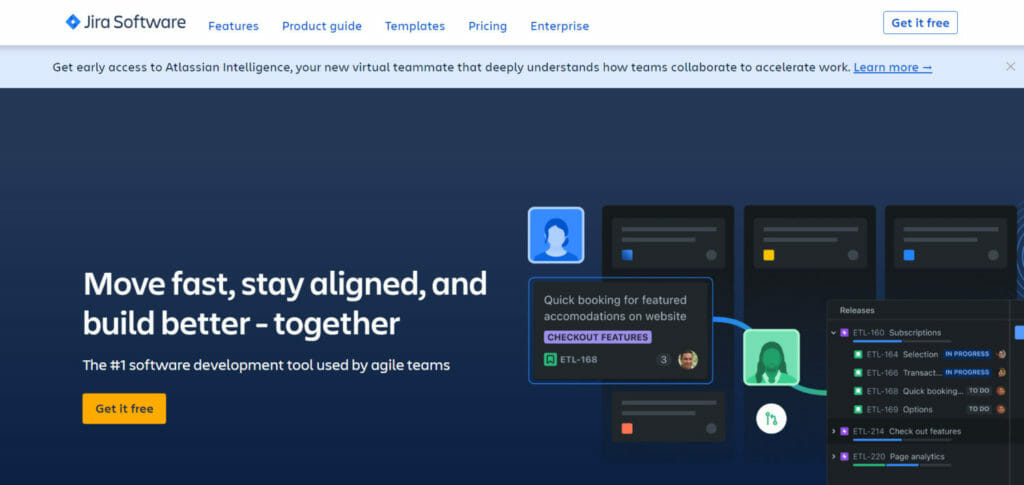
JIRA is the most effective agile project management software. Do you wish to complete the task in an orderly and regulated manner? This software has several essential features such as to-do/in-progress/done boards, reports with real-time insights, roadmaps, and many others for assigning work and managing team activity. With the different apps and integrations available, you may create successful processes for your team.
2. Asana
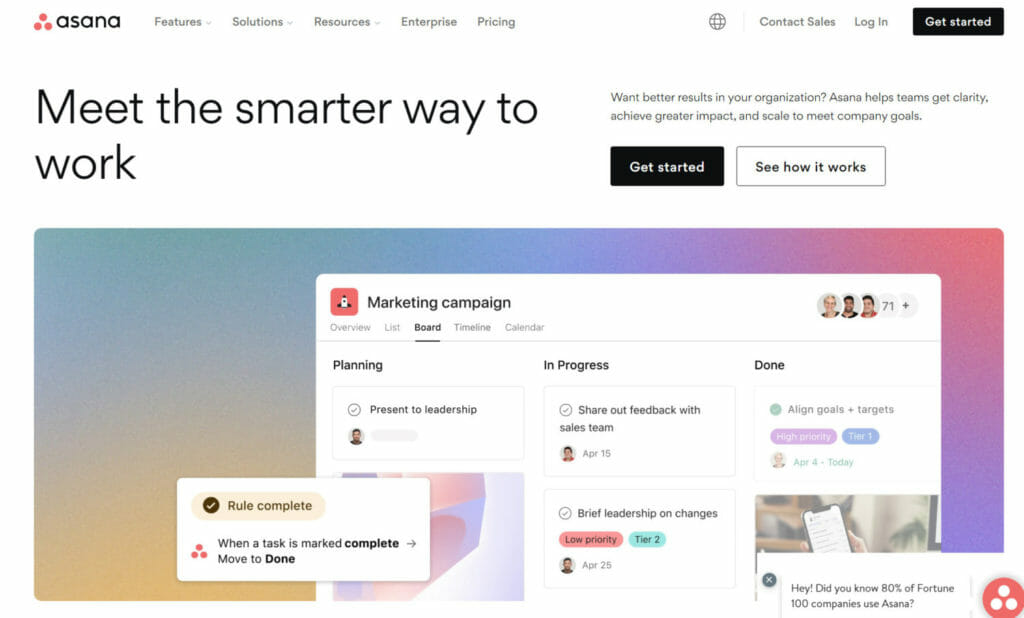
Asana allows teams to keep track of everything they deal with. Create and organize tasks, assign work to peers, set deadlines, keep track of all active projects on team calendars, and track progress using dashboards. Task and project chats help you discuss questions and provide attachments that you can readily retrieve if needed.
3. Basecamp

Basecamp can be used to replace a variety of applications. This project management application is intended to help you organize staff, allocate responsibilities, and track progress all in one spot. You can talk with coworkers, receive feedback, build to-do lists, schedule projects, maintain and share files, and hold online daily/weekly standups to get everyone on the same page.
4. Trello

Trello uses ‘cards’ to symbolize an online board. There may be notes, to-do lists, projects, shared files, or anything else that you require while working. This type of design aids with task visualization and organization. You can also add comments, checklists, labels, and due dates, upload file attachments, and chat with others (Chrome extension).
5. HiveDesk
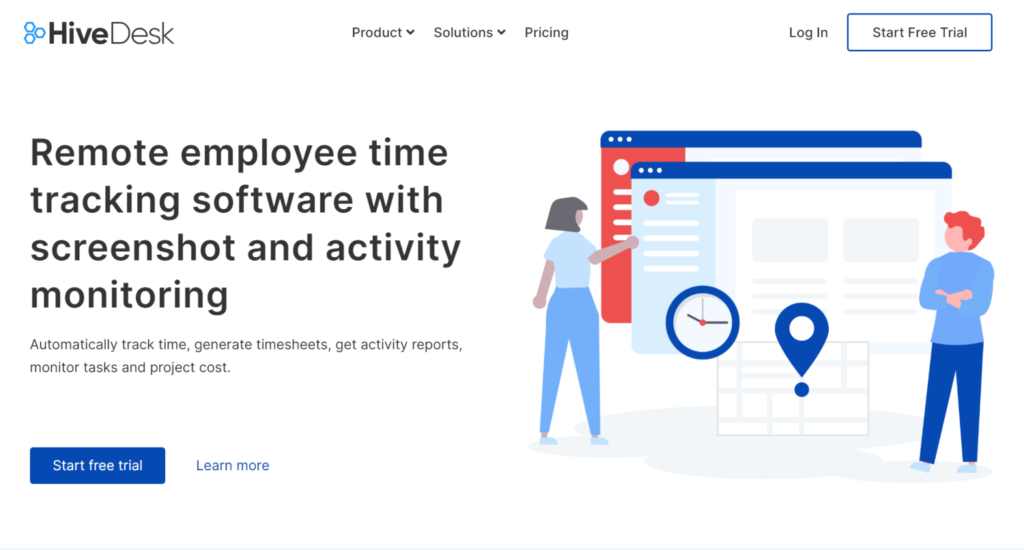
HiveDesk makes it easy to track remote employees’ productivity and manage projects that your team members are working on. You only need to create projects, invite employees to join them, and set priorities. It’s quite handy for tracking freelancer performance and saving money by only paying for work hours rendered.
6. Workzone

Workzone, which was founded in 2002, is a well-known and reputable piece of software. It’s “more powerful” than Basecamp and “easier to use” than Microsoft Project, according to the company.
Workzone provides some cool collaboration tools, such as project assignment templates and resource reports. Users also applaud its automated due date notifications, which keep employees on track.
Overall, as the Workzone team says in its introductory video, its technology is best suited for varied teams. It can function as a “shared home” for workers in various locations with varying tasks and a wide range of computing skills.
7. Mockplus
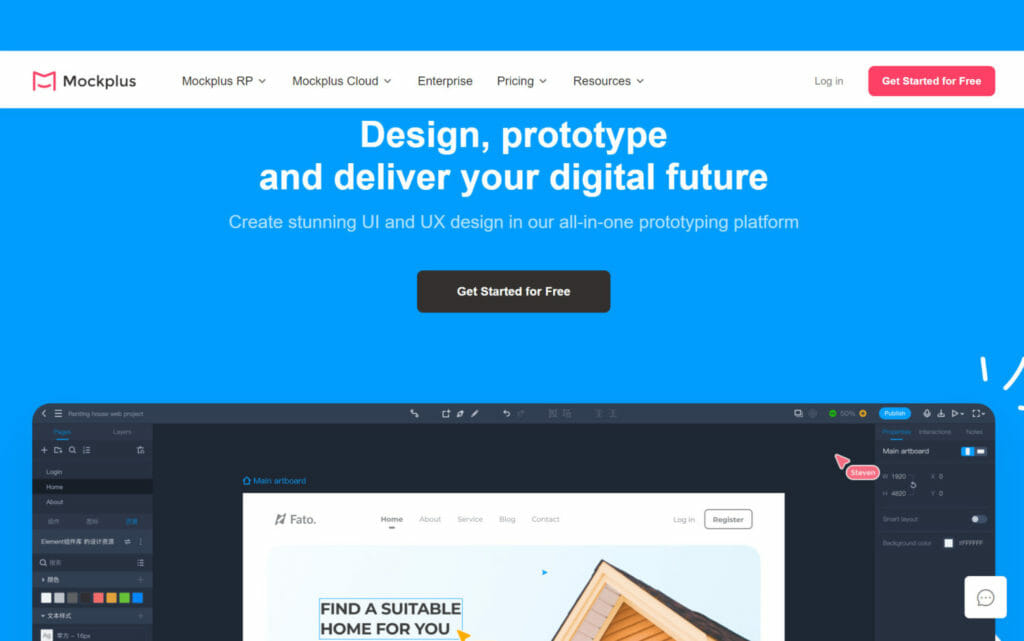
For designers and developers, Mockplus is a powerful project design collaboration tool. It has three key functions that are quite powerful: quick prototyping, design hand-off, and design system.
Mockplus streamlines your entire workflow and allows you to communicate and connect with colleagues in different time zones from start to end. In Mockplus, you may complete the entire process from design to finished product.
Mockplus is also fully integrated with PS, XD, Sketch, and Axure. It makes design and development cooperation easier because you don’t have to switch between tools.
8. nTask
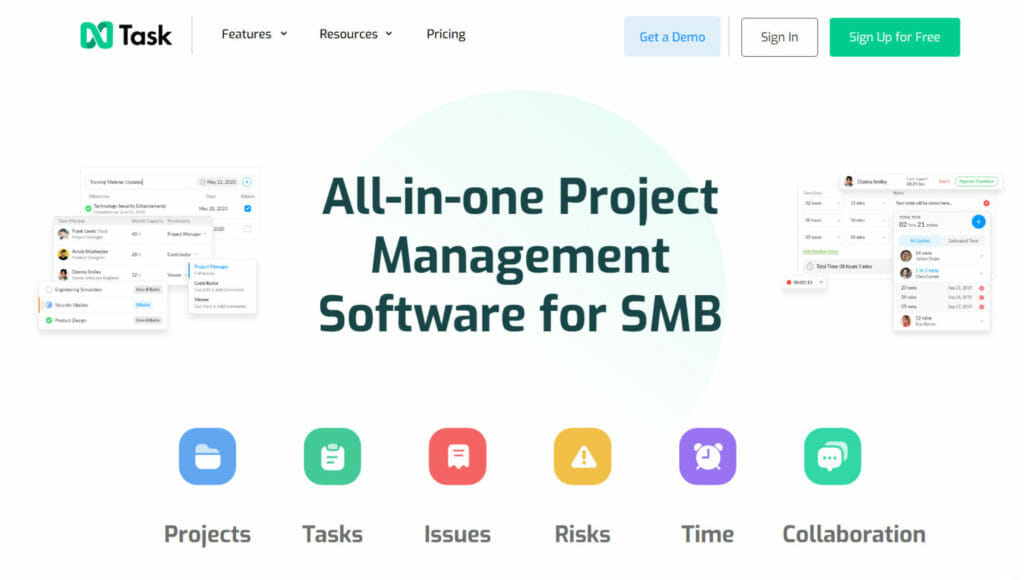
nTask is one of the most effective project management applications on the market. This tool is a one-stop shop for all of your project management needs.
nTask’s interface is simple and straightforward, precisely as users expect. It has a superb variety of tools that provide you complete control over your business-related duties.
Risk management, time tracking, task/project management, issue tracking, meeting management, and progress visualization via Gantt charts are all key elements of nTask.
9. ClickUp
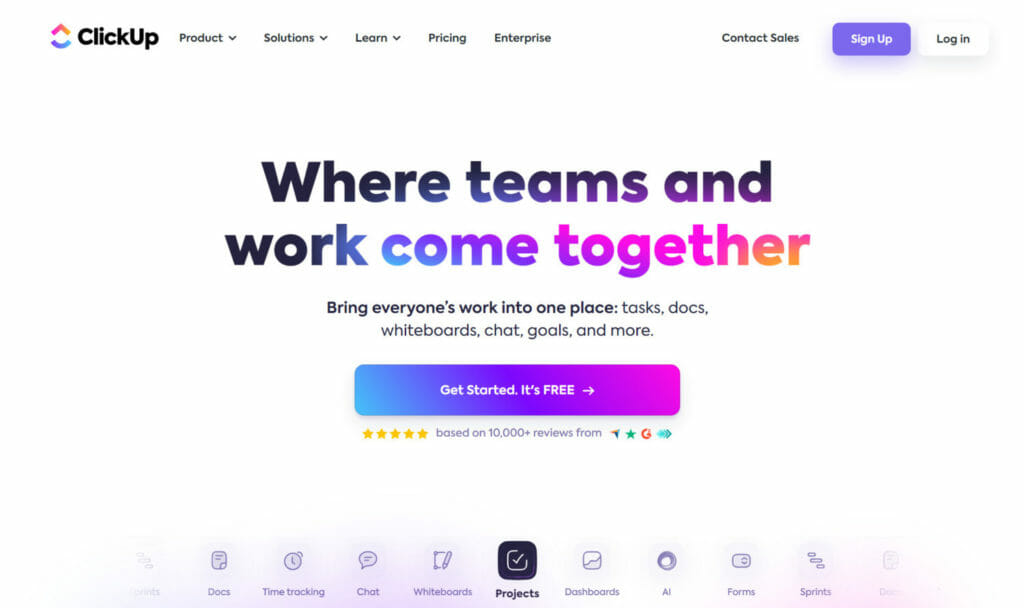
ClickUp is an all-in-one productivity app for everyone, from solopreneurs to major corporations. It gives a fully customized and straightforward interface to plan and manage your workload, track updates, and engage with your team on a single platform, regardless of project format.
Create sprint planning specific to your team’s needs directly in ClickUp and choose from over 15 visualization options, including Gantt, Box, and Kanban-like Board view. ClickUp is one of the most adaptable workflow programs, with hundreds of useful features, 1,000+ integrations, and a drag-and-drop UI that makes task management a breeze.
10. Simpleshow
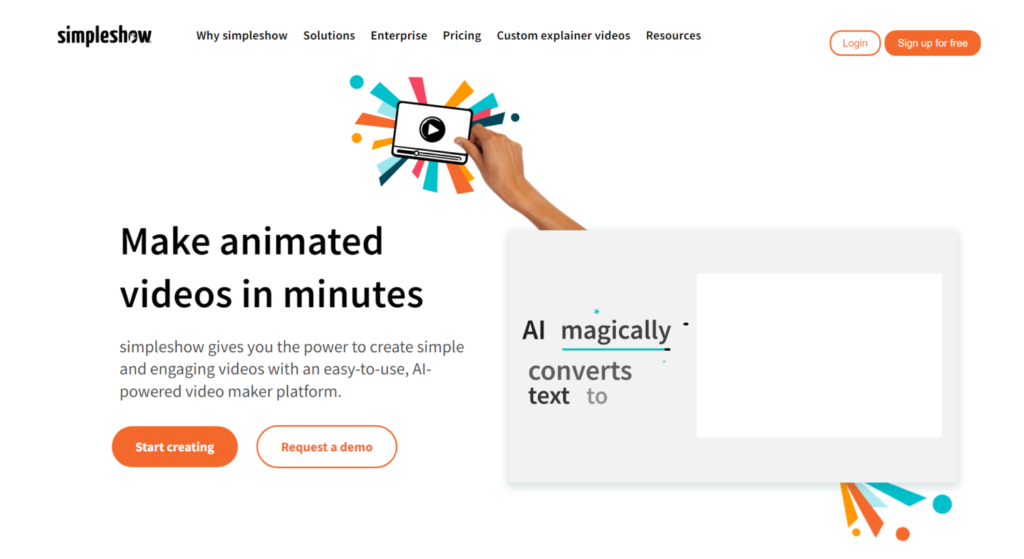
Simpleshow video creator is an AI-powered video platform for making short explanatory films on the web. The video producer offers simple tools that produce professional output.
It’s a wonderful tool for effective communication with internal and external stakeholders in order to properly manage and roll out initiatives.
The video creator proposes the best storyline for your message, and the explainer engine displays it with pictures based on your screenplay. You can choose from thousands of simpleshow illustrations or upload your own.
You can record your own voiceover or have simpleshow do it for you.
The video tool allows you to preview your video, make rapid edits, and easily share it with your audience.
Engagement Tools for Messaging/Chat
1. Slack
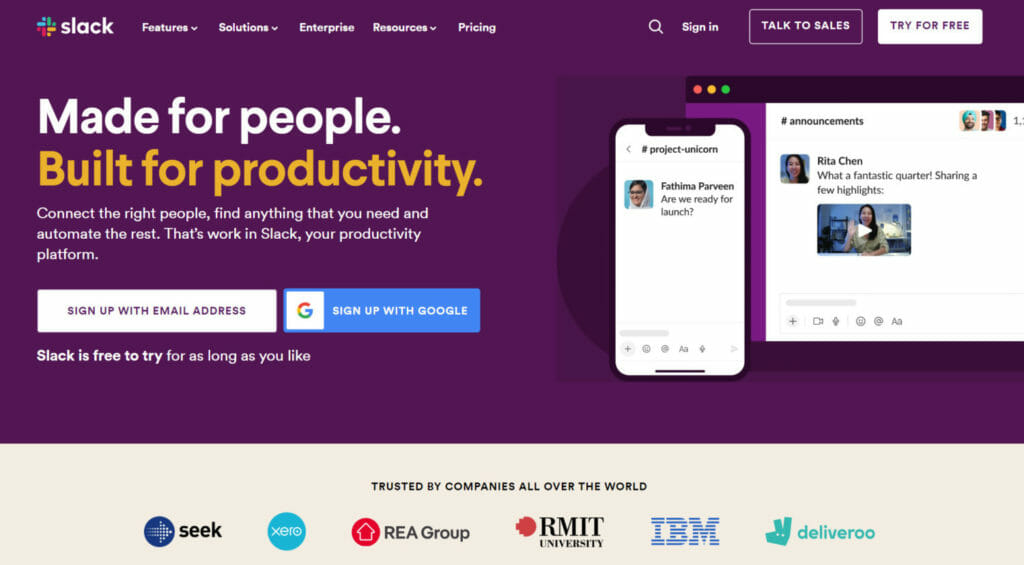
Slack is an all-in-one communication solution for businesses of all sizes. Private or open chat channels, reminder settings, searchable archives, and a plethora of Slackbots boost team communication. There are additional options for voice and video conferencing, as well as screen sharing. Furthermore, because Slack interfaces with over 2400 different software products and services, you may receive all of your work-related notifications in one spot.
This is the most expensive program we’ve looked at so far among team communication solutions. Most of the time, its overly intricate interface just confuses users, who have no notion how to benefit from it. Furthermore, once they have hundreds of channels, individuals are at a loss as to what to do with them.
2. Fleep

Fleep facilitates dynamic communication within and between organizations. You can use this platform to communicate with colleagues or employees from other firms, monitor tasks, share files, and make audio and video chats. Instead of the traditional online/offline signs, there are ‘Presence characteristics’ that indicate if a person has time to communicate or not, and a ‘Writing indicator’ that indicates when someone is responding to you.
Instead of creating a restricted team ecosystem, this software allows you to connect openly with everyone who is and isn’t using Fleep. All you need is the person’s email address. Having said that, it’s difficult to consider Fleep a “team” messenger.
3. Microsoft Teams
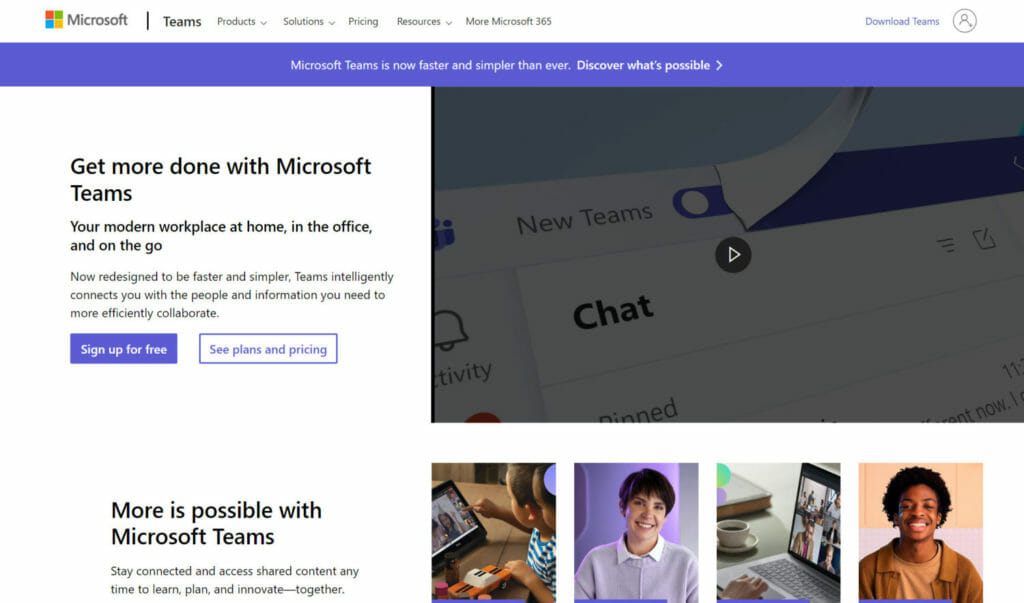
Microsoft Teams, like its competitors, guarantees that you stay in touch with coworkers. Chat messages in private or group discussions, voice calls, and video meetings are used for communication, as is the seamless uploading of photographs and documents to the conversation. Microsoft Teams connects with other Office 365 products and allows third-party plug-ins, making it an excellent team communication tool.
Make sure you have a qualified administrator on hand because installing Microsoft Teams on your own is doubtful (we spent a whole day at work putting it up).
4. Yammer
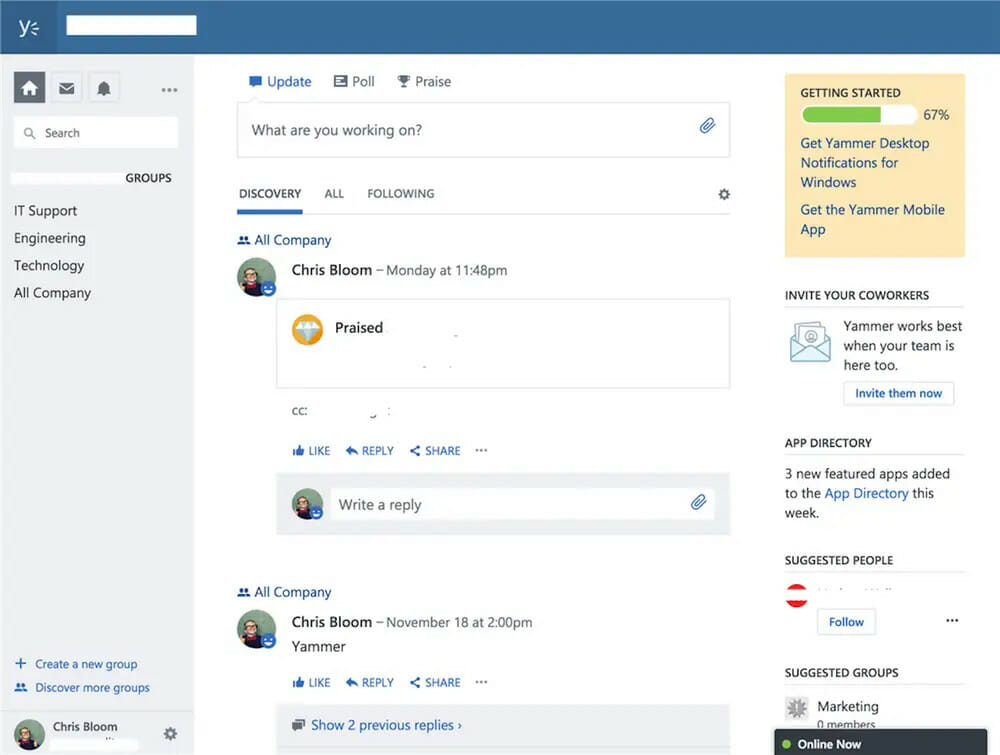
Yammer is a business network platform that promotes internal collaboration. You can send people who follow your profile immediate brief messages, share ideas, solve problems, and discuss projects with colleagues in internal and external groups. Yammer also facilitates document editing and collaboration by connecting with Microsoft Office 365.
5. Rocket.Chat
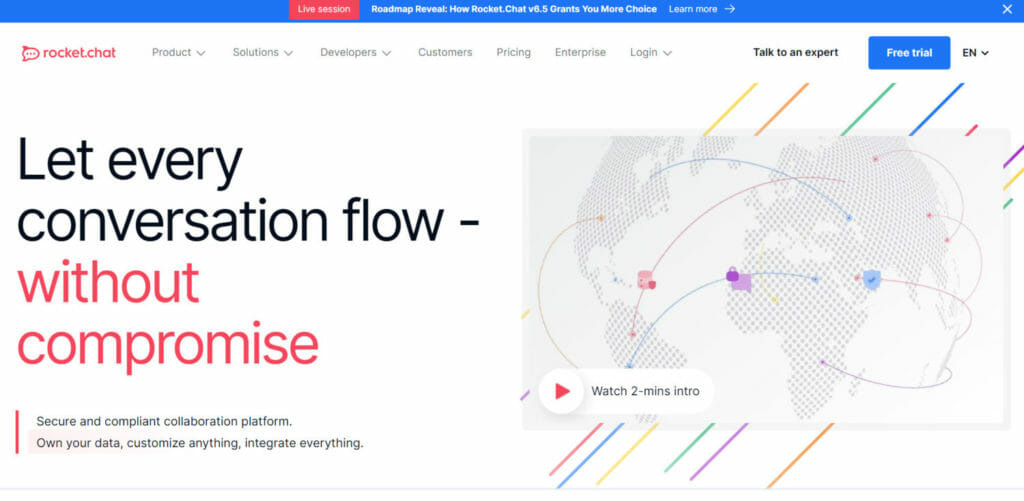
Rocket.Chat is an open-source tool for team collaboration. Team members can communicate via direct messages, groups, channels, and conversations. They can also use Rocket to make video calls.Pexip, Jitsi, or Google Meet can be used to communicate. Collaboration is thus made simple even when teams and collaborators work physically apart.
Because it’s open-source software, integrations are simple, and Rocket.Chat can be integrated into any team’s workflow to boost productivity and make it easier to communicate with stakeholders both inside and outside of the organization.
Engagement Tools for Employee Feedback
1. 15Five
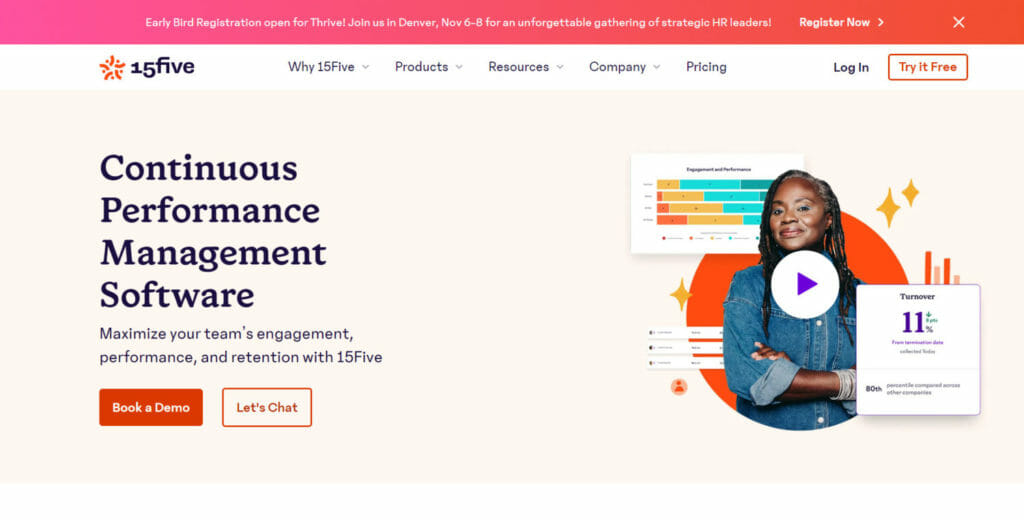
Employees need 15 minutes to respond to a management survey, while managers need five minutes to review: That is the fundamental concept underlying the employee engagement survey platform. However, the engagement tool has many other valuable functions. Managers can create custom survey questions (15Five has a library of useful question prompts), assign different reviewers to different employees, and send responses to other people in the organization who need to see the feedback or are responsible for enacting change, such as a hiring representative.
2. Energage
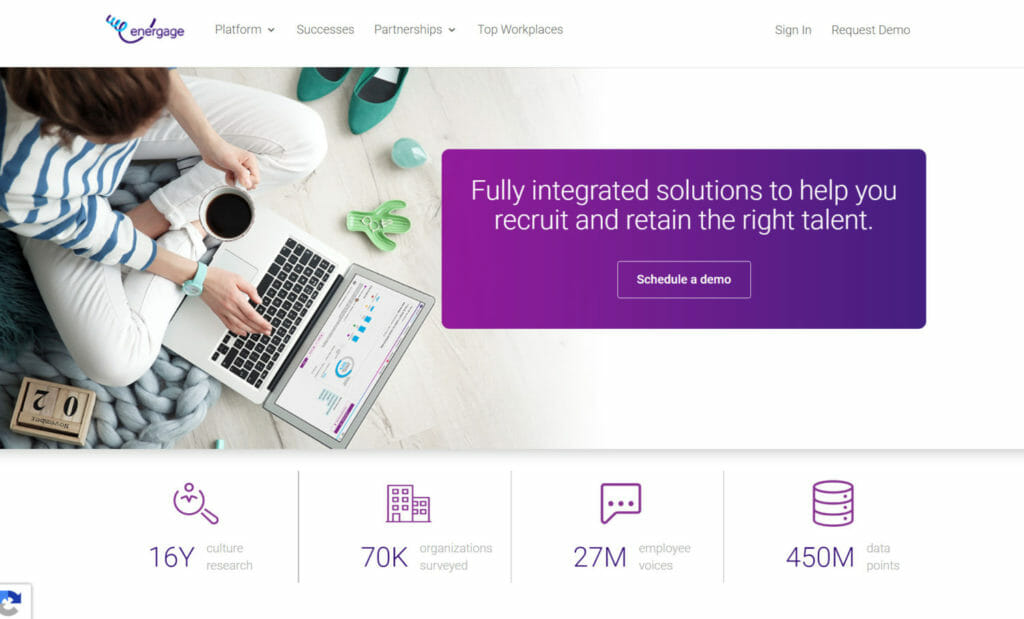
Energage is a platform for employee involvement aimed at boosting organizational culture. Employees are approached in three stages by the tool: survey, connect, and coach. After requesting feedback from your employees, you can follow up with them to learn how to connect employees’ demands with the needs of the organization.
3. RoundPegg
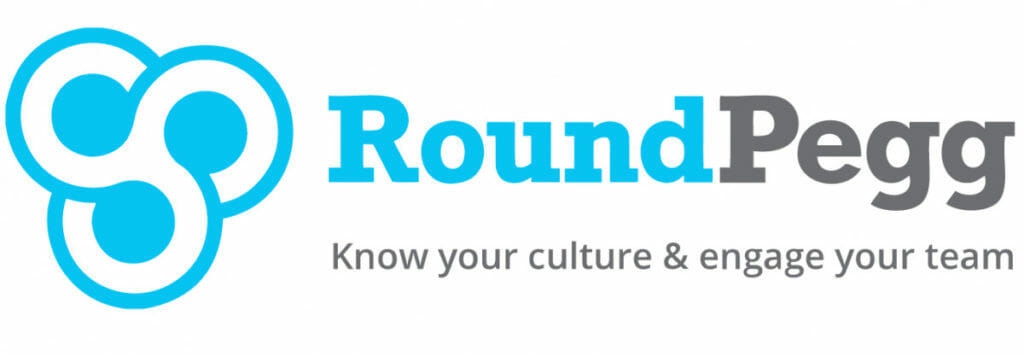
RoundPegg is a bespoke survey tool that polls your team members on eight topics that have been found to correlate with employee engagement, such as job fit, expectations, growth and development, trust, and so on. Based on the cultural types of your employees, it then makes recommendations to raise your score in weak and failing areas.
The feedback tool can be used for short pulse surveys on an initiative or to evaluate happiness and satisfaction. In addition, the company provides products and services related to hiring for cultural fit and defining your organization’s individual culture.
4. Qualtrics
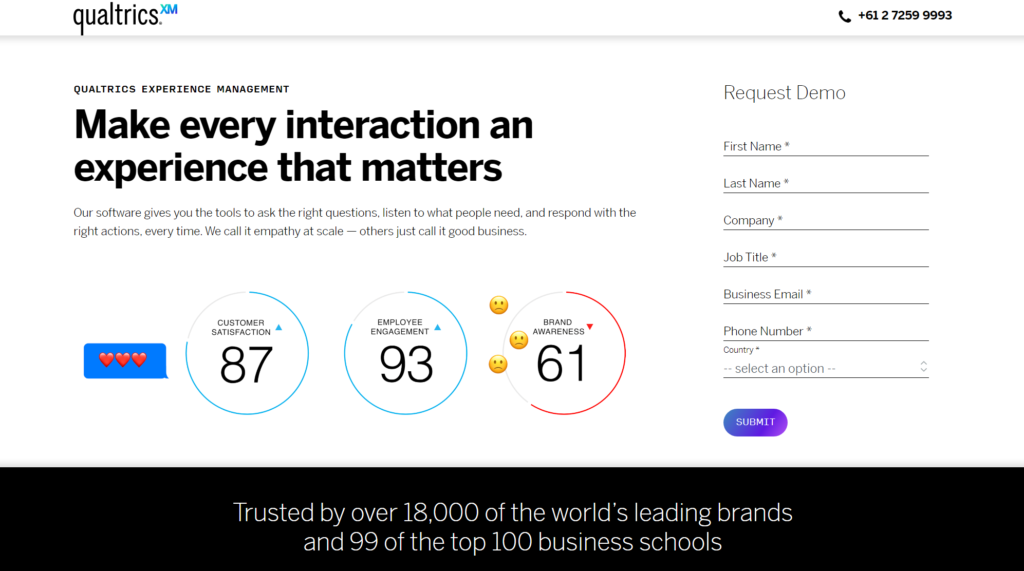
The product provides a set of “employee experience” tools to assist businesses in auditing the experience they provide to their customers as well as their own staff.
The versatile platform also enables you to extract particular details from employee feedback, even if their comments are open-ended. Qualtrics is a valuable tool for anyone who wish to become more sensitive to their organization’s demands and forecast how different teams will feel and perform in the future.
Also, you may read:
10 Best Employee Monitoring Softwares
5. Awardco
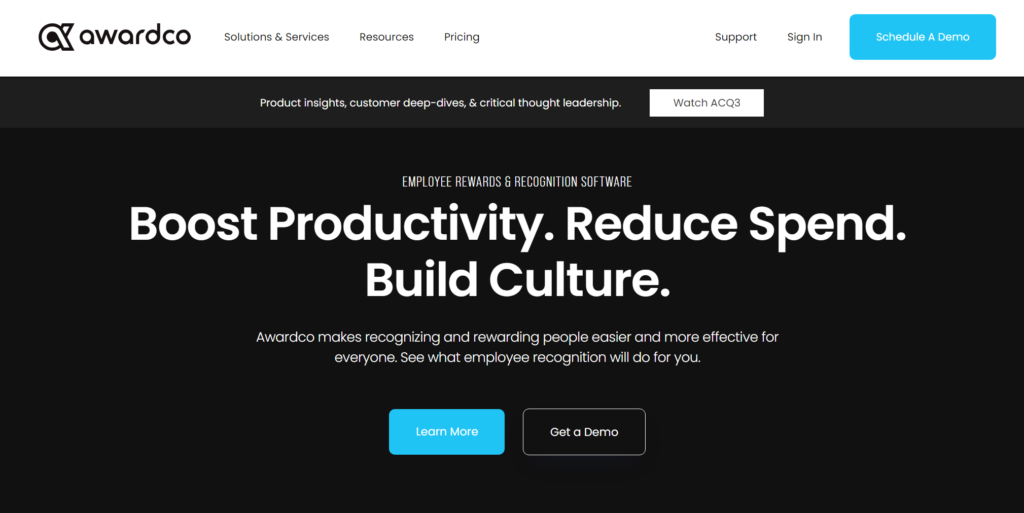
Awardco offers a huge selection of employee rewards designed to make recognition, appreciation, and celebration a staple of your company culture.
They also created a seamless integration with Amazon Business which means the potential employee rewards will make your head spin. Perfect for finding the right gift or experience based on your individual employees’ interests.
6. Reflektive

“Managers can use the platform to conduct yearly, quarterly, or even monthly performance reviews.” It also has a tool for listing company and team goals, so your direct reports always know what they should be focusing on. Employees can use Reflektive to submit feedback to other team members as well as respond to manager-controlled morale polls.
7. Tivian
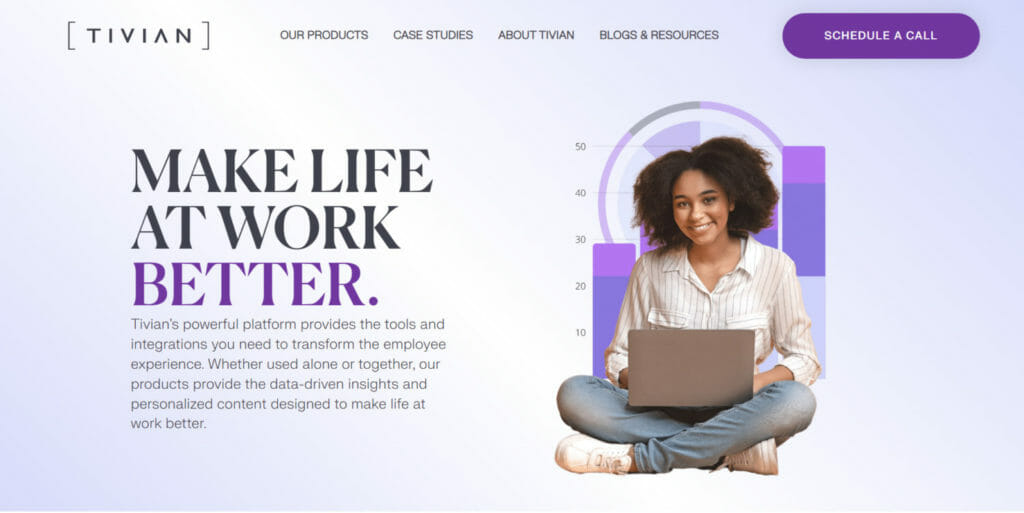
“Tivian recognized that the workplace was rapidly changing and that a comprehensive 360-degree approach to both feedback and action was required.” Tivian now offers all of the tools and connectors required to attract and retain high-performing staff, thanks to the recent acquisition of GuideSpark.Through configurable dashboards, Discover XI gives AI-powered listening tools with rich insights.
Further, Communicate XI provides employees with individualized material on areas such as leadership, culture, benefits, and more. Tivian’s solutions, whether used alone or in tandem, take aim at traditional feedback tools with an innovative end-to-end approach.
Engagement Tools for Knowledge Management
1. Confluence
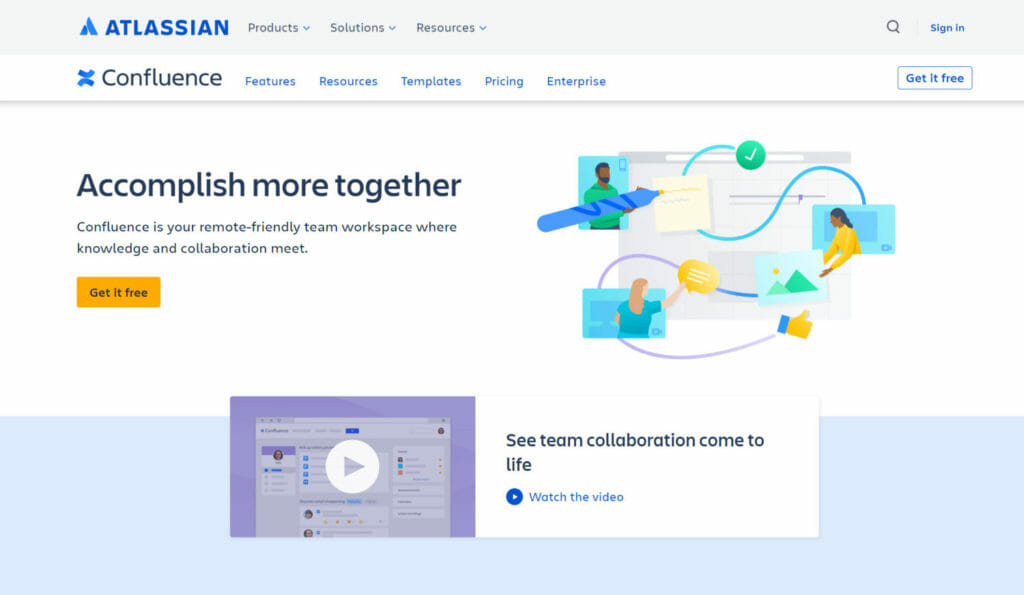
Confluence organizes teamwork and centralizes the information needed to stay current. Using templates, create meeting notes, project plans, and product needs, and receive instant feedback, pin important remarks, and search for company information all in one spot. This application also includes handy add-ons such as ‘Questions’ for voting and discussions, as well as ‘Team Calendars’ for scheduling projects and events.
2. Bloomfire
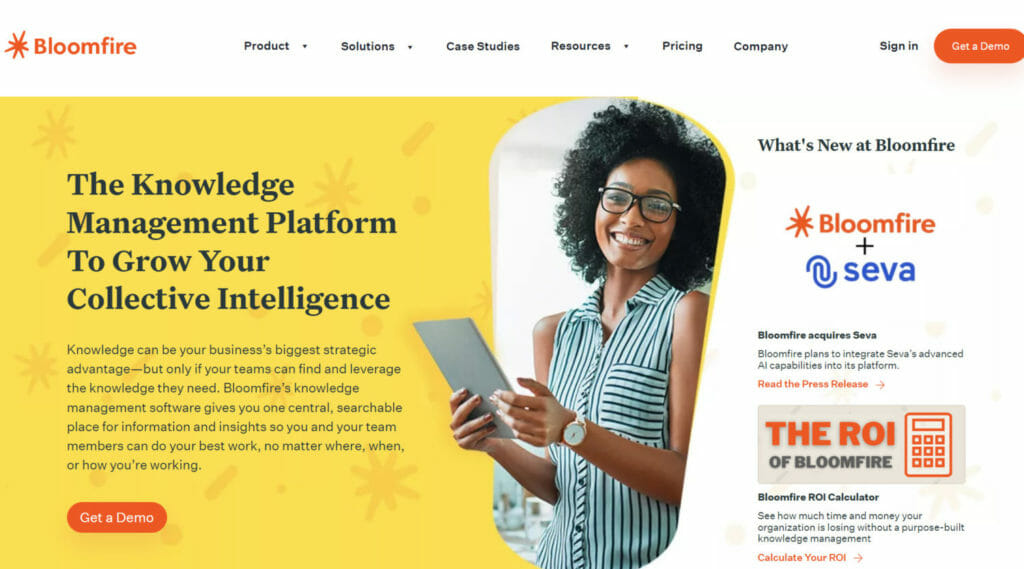
Bloomfire is a knowledge-sharing platform that helps your team become more innovative and successful. This program allows you to capture, archive, and expand on existing information. Organize groups based on geography, job function, or interest to boost engagement and knowledge sharing. Bloomfire stores documents in a centralized, searchable location, making it simple to access what you need and complete tasks in seconds from any device (desktop, mobile, tablet).
3. Nuclino

Nuclino is a knowledge sharing tool designed for teams who want instant access to shared internal information. This tool provides a plethora of features that allow you to easily write and edit articles with others, share them with your team, enrich your content with images, videos, tasks, mockups, start conversations and discussions, organize information in boards and graphs, use tags and categories, and search functions.
4. Scribe
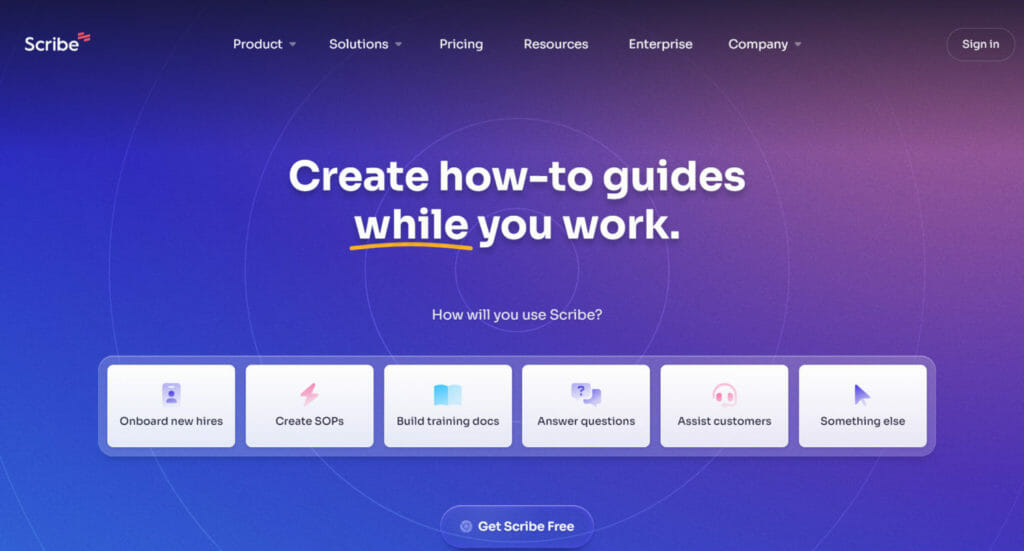
Scribe is a knowledge management and sharing application that rapidly generates step-by-step guides for teams and stores them where you work. It records your computer work, converting clicks and keystrokes into a guide with screenshots and written instructions.
After creating a Scribe, users can share it via a link or embed it in a wiki, CMS, or other tool. When you use a website (through the Chrome extension) or Slack, Scribe recommends guides from your team.
5. Helpjuice
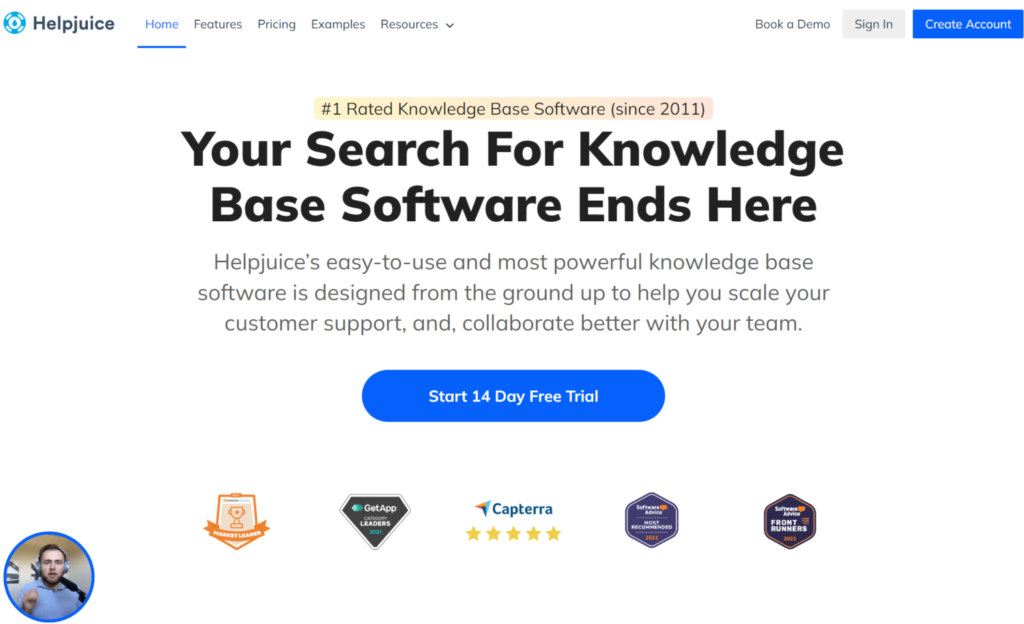
Helpjuice allows you to host your internal documentation, making it easier to onboard new workers and allowing staff to discuss and transfer expertise collaboratively. Internal personnel can edit documents in real time, leave comments, and tag others.
You can utilize Helpjuice’s analytics to learn how employees are currently using the knowledge management solution and what more docs should be generated to assist your team. The NLP-based search in Helpjuice makes it simple for internal personnel to locate the answers they need, when they need them.
Engagement Tools for Employee Recognition
1. Bonusly
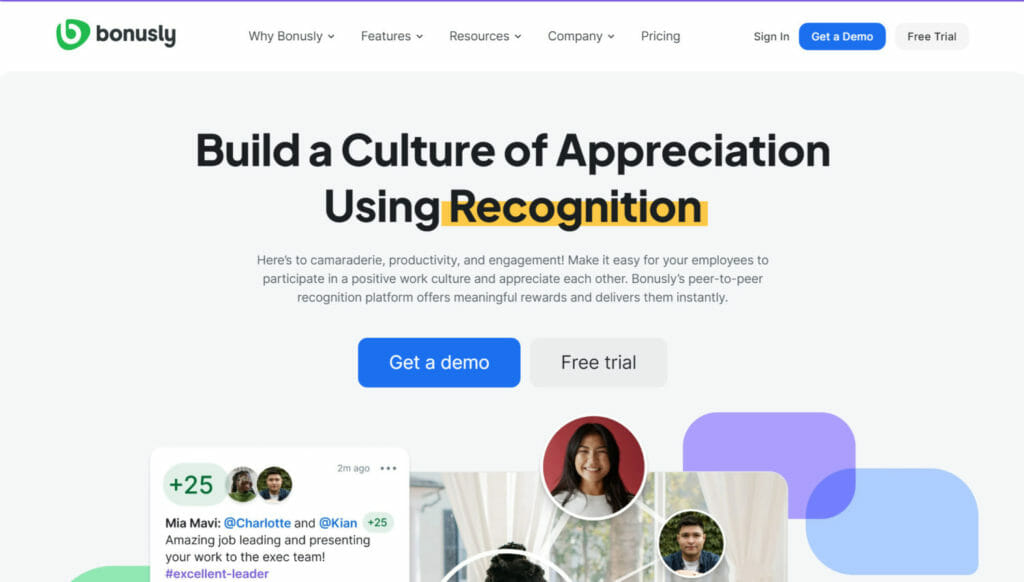
This peer-to-peer recognition tool enables all employees within an organization to recognize and reward one another while also facilitating constructive employee interactions. Bonusly provides rich data and analytics to demonstrate the quantity of prizes distributed by a department as well as the recognition received by each employee. Participants can exchange their points for gift cards or branded products, with global incentive possibilities available for multinational corporations. The platform’s goal is to increase staff retention and productivity among teams.
2. Assembly
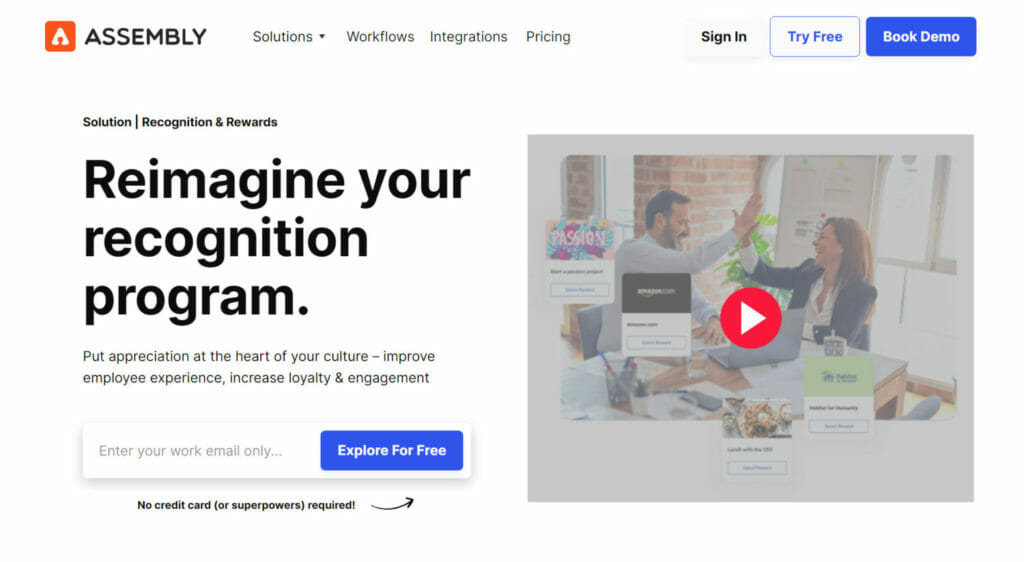
Assembly is an employee engagement platform that enables businesses to provide prizes and social recognition to their staff in order to improve their company culture. Traditional awards, such as gift cards or branded products, are available, as are unusual rewards, such as lunch with the CEO and paid professional development classes.
This system contains a calendar for birthday and holiday reminders, ensuring management recognize staff birthdays in order to boost employee morale. Because this software concentrates on rewards and recognition, it has limitations as an employee workflow tool when compared to alternative options.
3. WorkTango
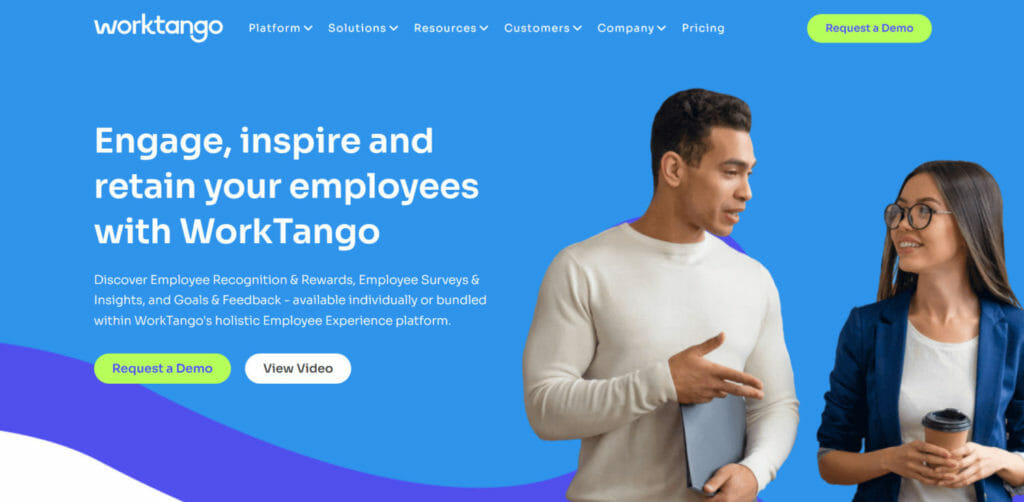
WorkTango’s platform integrates employee engagement features such as recognition and awards, feedback via surveys, and goal-setting to assist performance improvements. Custom company branding and customisable confidentiality settings are available on the platform. The platform’s rewards system works by motivating critical behaviors that instill and reinforce organizational values.
Besides, this system assigns awards to employees using points or tokens, which may appeal to firms that already have a recognition system in place. When compared to other software solutions, the executive summary part of reviews has certain limitations. It isn’t as rich or straightforward to navigate.
4. Nectar

This employee engagement tool provides employee recognition mechanisms in order to foster corporate community and promote essential business principles. Nectar uses a points-based system to encourage peer-to-peer appreciation in the workplace. Employees can exchange points for digital gift cards or branded merchandise, as well as receive points for completing wellness tasks.
The system invoices on a monthly basis, allowing businesses to test the program and see if it works for them before committing to a long-term contract. When compared to the app, the web platform appears to have more comprehensive features, which may alter some users’ experiences.
5. Leapsome
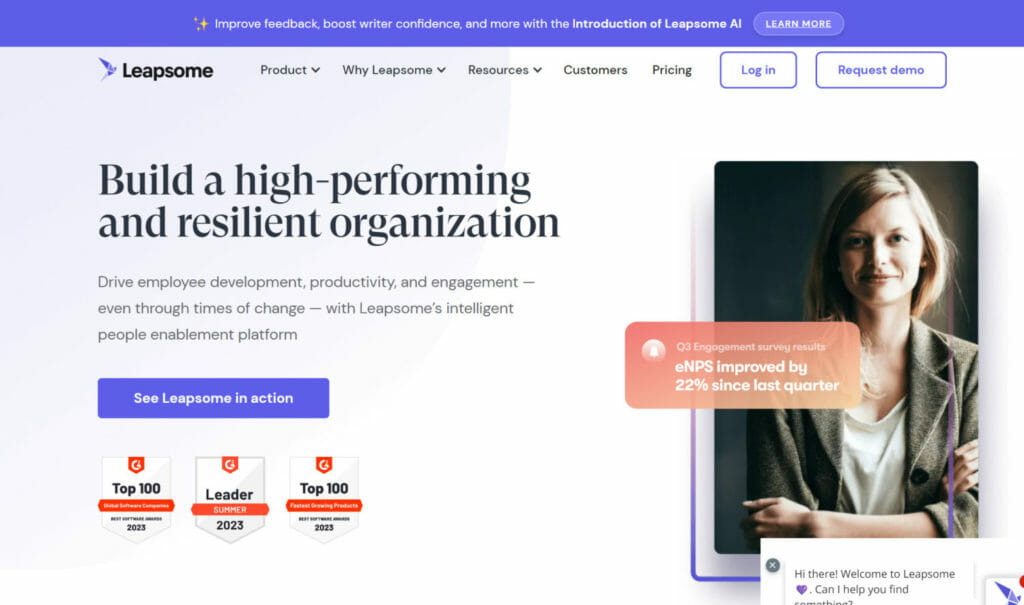
The Leapsome platform focuses on allowing meaningful, growth-oriented assessments from employer to employee, with a particular emphasis on the 360-degree feedback process. You can utilize the program’s psychologist-created surveys and quizzes or create your own based on business and team needs.
With choices for self-assessment, manager feedback, and peer reviews, Leapsome assists firms in evaluating personnel, projects, and leadership. Various anonymity options are available inside the site to ensure evaluations are neutral and provide helpful feedback for changes. While the program is still in its early stages, there are several flaws and usability difficulties that Leapsome is working to resolve.
6. Culture Amp

The Culture Amp platform promises to boost employee capacities by making it easier to share both positive and negative comments. Employers can use this form of negative feedback management system to understand the negative to positive feedback ratio that they are providing to their employees.
The system’s purpose is to assist employees in self-managing, increasing self-awareness, and efficiently reporting to teammates. This assists organizations in developing high-performing teams through goal monitoring, professional development reviews, and measurable achievements.
Culture Amp assists organizations in prioritizing employee development in order to contribute to organizational success. The platform offers annual price plans with a one-year minimum commitment. Some features may be beyond of reach for small businesses, and the platform’s ability to be customized and integrated with others is limited.
Engagement Tools for Mind Mapping
1. Coggle
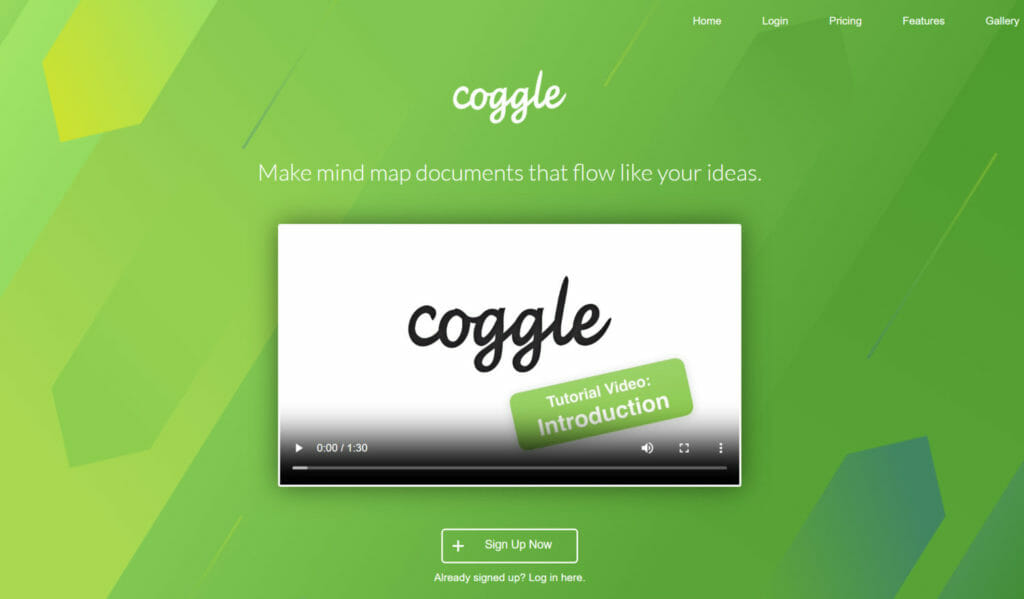
Coggle is a mind mapping application. It is a web application developed for groups. The program generates hierarchical papers to assist users in visualizing and sharing ideas. You can then generate, analyze, and memorize ideas. Understand complicated stuff as well.
Users of Coggle can share mind maps with as many colleagues as they choose. Several users can simultaneously add or edit branches on the same diagram. And the application keeps every update you make.
Coggle accepts various types of data. This features an unlimited number of image uploads, links to Google Drive files, text labels, and math calculations. Coggle also supports markdown, making it simple to add titles, links, and styling to text.
2. Mural
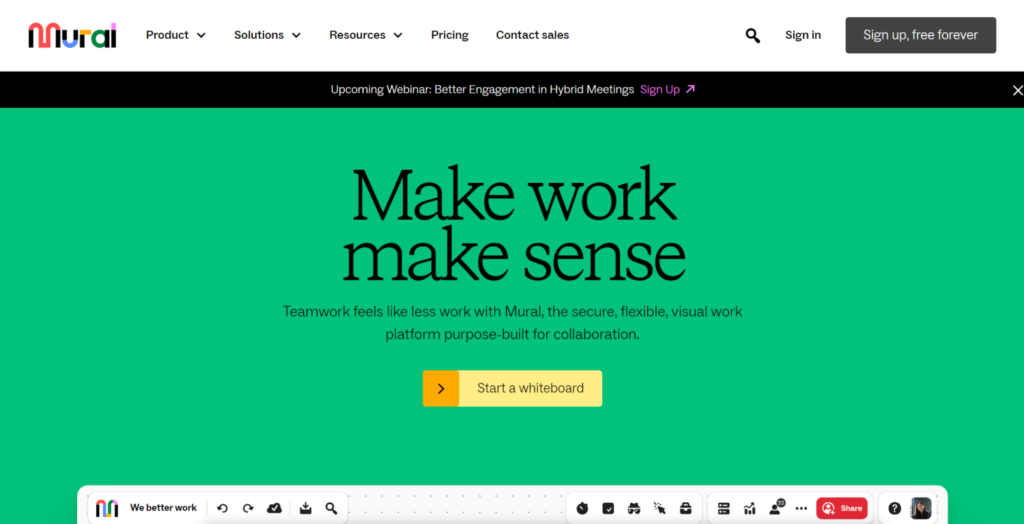
MURAL is a visual collaboration tool for humans. It includes tools for creating roadmaps, infographics, and mind maps.
The mind mapping template in MURAL allows you to organize ideas in a structured diagram. This allows you to experience complexity more fully. And look for conceptual links.
You can include images, text, and hyperlinks. Also included are films and other forms of multimedia. This results in more animated visual documents.
You can make comments and offer your opinion on a proposal. Agree on timelines and objectives. There is a built-in voting system to help you reach a collective decision.
There are also brainstorming templates available. Storyboards and concept mapping are two examples.
Also, you may read:
7 ways to Entertain or Engage your Remote Team
3. MindNode
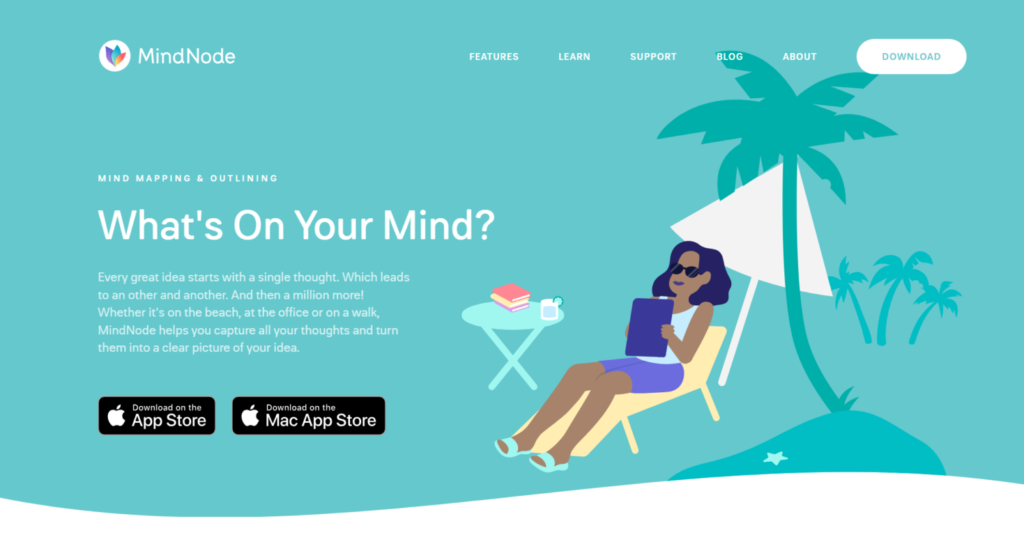
MindNode is a simple and appealing mind mapping tool. To contextualize thoughts, add Visual Tags to items. This might assist you in grouping and prioritizing various types of ideas. It also allows you to view seemingly unrelated clusters of thoughts.
You can use mind map nodes to create tasks. The Apple Reminders app can sync deadlines and meetings. Check off completed jobs to receive a heads-up on what’s coming next.
Switch between task, outline, and focus views. This enables you to filter information while also blocking out distractions. Task mode simply displays tasks. Those you’ve finished and those you’re working on. And those you will work on later.
4. Mindly

Mindly’s goal is to help you “organize your inner universe.” It’s a free mind mapping app for Mac OS/X and mobile devices running Android/iOS.
The program assists you in capturing thoughts and breaking down large ones. It’s also useful for workflow design and project management.
Its simplistic UX is appealing and simple to use. Mind maps are brightly colored and stand out on a neutral background. Notes and images can be attached to elements.
You may quickly share your mind maps with team members and others. Send them to other Mindly users in their current state. Alternatively, you can save them as text, picture, OPML, or.PDF files.
5. XMind
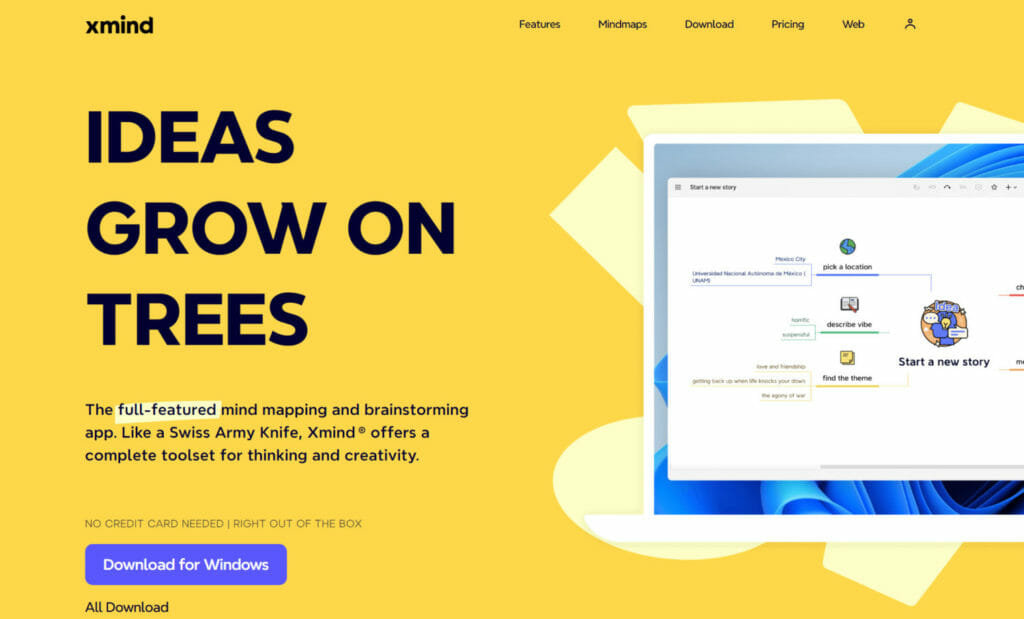
A complete mind mapping and brainstorming application. Intended to spark creativity and inspire ideas. Assists remotely distributed teams in being productive and in sync.
Your mind map’s branches can each have their unique structure. This comprises logic charts, matrix diagrams, and tree diagrams. This means you may design dynamic diagrams that express several types of information in a single view.
XMind comes with org charts, timelines, matrix charts, and fishbone charts. You may view casual relationships as well as perform detailed comparative analysis. Organize milestones chronologically and schedule actions in-app.
There is a picture export tool for quick snapshots and sharing. A theme editor allows you to personalize and visually enhance mind maps.
6. Lucidchart
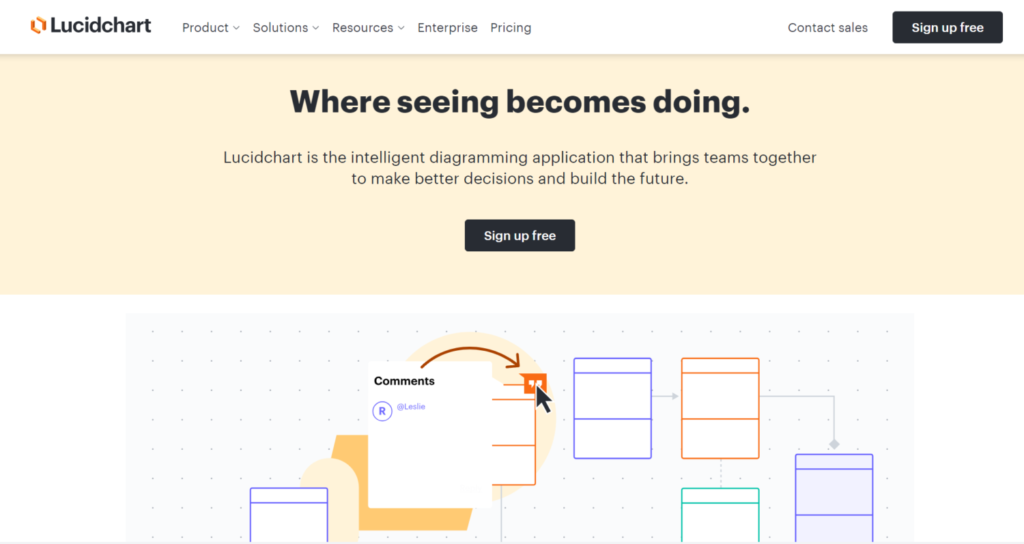
The company Lucidchart bills itself as a “visual workspace for remote teams.” With data visualization tools, infographics, and whiteboards, it’s designed for real-time collaboration.
Lucidchart provides numerous possibilities for creating mind maps. You can make a mind map from a template or from scratch. Begin by selecting a shape library for mind maps. Color and layout can be readily customized using the UX.
Mind map outlines can also be imported from.txt files. Text outlines with tabs or spaces are recognized by Lucidchart. It generates a mind map by automatically recognizing thoughts and sub-topics.
It also integrates with Slack. Simply provide Slack access, then use the /lucidchart command in your chat. This will generate a link to a brand-new Lucidchart diagram.
7. Mindomo
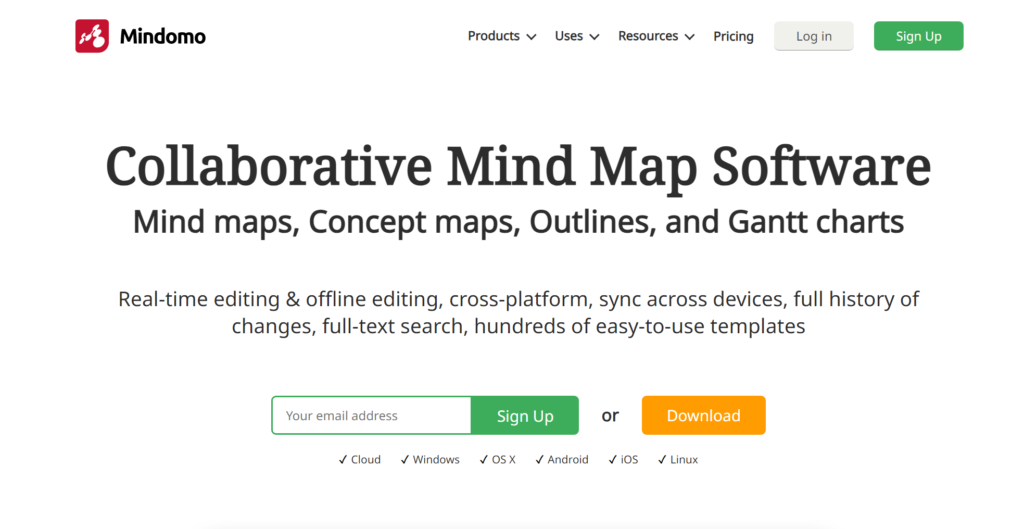
Mindomo is a mind mapping application. It is meant for use in the job, education, and personal life. The capabilities in the app help with brainstorming and strategic planning. They are meant to promote creative thinking and to aid in problem solving and decision making.
Make use of your team’s combined imagination. Exchange ideas and work while on the move. Invite outside colleagues to help you shake things up. Make detailed plans ahead of time. You can divide your work processes into various stages.
Determine your objectives. List the tasks that must be completed step by step in order to achieve them. Determine who on the team should be assigned to which tasks.
You can tag ideas using a hashtag function. Then you can sort and filter them. This aids in planning and keeping track of many elements.
8. MindManager
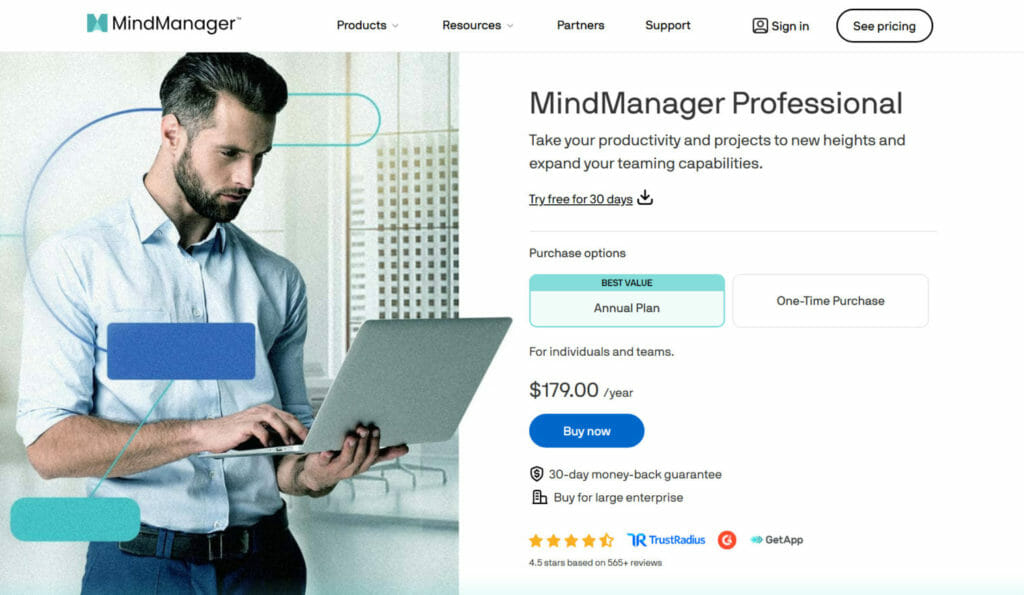
MindManager is a virtual whiteboard for organizing knowledge. It can help with project management, process analysis, and knowledge transfer.
View the big view while zooming in on the smallest details. Ideas and information should be captured, organized, and contextualized. Connect subjects by dragging them.
Manage your ideas from conception to completion. Transform your best ideas into projects.
Combine all organizational information in one location. Keep track of goals, resources, and deadlines in a collaborative visual environment. Reduce job duplication and misunderstanding.
Notes, links, and files can be placed next to the appropriate parts for convenient access.
9. GitMind

GitMind is a cloud-based mind mapping and flowchart tool that is free to use. It is intended to stimulate creativity and increase productivity.
Mind maps can be created using free, modifiable templates. There are several choices, ranging from marketing strategy to performance evaluation. Aside from traditional mind maps, there are logic charts, UML diagrams, and other tools.
Elements can be changed. You can include as many images, URLs, and comments as you want. Modify stylistic parameters such as text font, color, and size.
Toggle between outline and mind map views. This allows you to move through processes in a systematic manner. Completed mind maps can be exported in.PDF,.TXT, and.SVG formats. Save your work and it will be immediately synced across devices.
10. Ayoa

Mind mapping and task management are combined in Ayoa. Mind maps allow you to work rapidly. This is extremely beneficial when a deadline is approaching.
Fill up the blanks with your ideas. Then, adjust the look and feel of the branches. Change the color of objects and text, as well as add photos and icons.
In-app collaboration is possible by inviting team members. Vote on ideas and reach a rapid consensus. Increase project turnaround time, especially for remotely distributed teams.
Tasks can be created from branches. They can be assigned to certain team members. Then include files, notes, and deadlines.
Organic mind maps are used for idea generation that is less time sensitive. Expand from a primary idea and create an infinite number of branches. Colors can be changed, and photos and files can be added.
Conclusion
That’s all there is to it. These are our top selections for the best remote-working tools, which have made it easier for remote teams to soften the impact of transitioning from the office to home while remaining connected.
We hope you’ll discover the proper tool here to help you stay productive no matter how far apart you are, whether your team needs to better collaboration, time management, resource organization, or something else entirely.
Frequently Asked Questions
What are remote team engagement tools?
Remote team engagement tools are software applications and platforms designed to help remote teams connect, collaborate, and build strong working relationships. These tools facilitate communication, team-building activities, and productivity among team members who work in different locations.
How can I use video conferencing tools for team engagement?
Video conferencing tools enable face-to-face interactions, making them ideal for team meetings, one-on-one check-ins, and virtual team-building activities like virtual happy hours, online games, or training sessions.
How do communication tools enhance remote team engagement?
Communication tools like Slack or Microsoft Teams provide chat, file sharing, and video conferencing features that enable seamless communication and quick collaboration among remote team members.
Are there tools for recognizing and rewarding remote team members?
Yes, tools like Bonusly and 15Five enable remote team members to recognize and reward each other for their contributions, fostering a positive and appreciative work culture.

